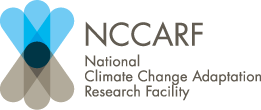You are here
Climate change and health: the future isn’t what it used to be
Climate change could have far‐reaching consequences for human health across the 21st century. But there is at least some good news on how health systems are adapting.
‘It doesn't take an extreme weather event to have an extreme health impact,’ said Professor Kristie Ebi, from the University of Washington, speaking at the Australian Meteorological and Oceanographic conference in Canberra in February 2017.
Kris conducts research on adaptation to climate change, including on extreme events, thermal stress, food safety and security, water-borne diseases, and vector-borne diseases. Her work focuses on understanding sources of vulnerability, and designing adaptation policies and measures to reduce the risks of climate change in a complex environment.
‘Altering weather patterns and sea-level rise may facilitate changes in the geographic range, seasonality, and incidence of some infectious diseases in some regions, such as malaria moving into highland areas in parts of sub-Saharan Africa and Asia,’ she said. ‘The geographic range of many mosquito-borne diseases is limited by temperature. Increasing temperatures with climate change may increase the population at risk when diseases emerge or re-emerge in new areas. For the mosquitoes that can carry dengue fever, Zika virus, and other viral diseases, our built environment provides many places suitable for breeding. And air travel further helps move around viruses such as dengue.’
People have a narrow capacity to adapt to high temperatures, so increasing ambient temperatures and heatwaves will increase vulnerability to heat-stress. Another consequence of climate change includes more pollen, which could exacerbate asthma and other respiratory diseases.
Changes in water availability and agricultural productivity could increase undernutrition, particularly in parts of Asia and Africa. ‘The biggest health consequence of climate change will likely be undernutrition,’ she said.
Kris said that development choices will alter the underlying vulnerability to these health risks, affecting the magnitude and pattern of impacts. ‘Vulnerability is also tied to capacity. Because vulnerability and capacity vary from place to place, the policies and programs implemented to alleviate health risks need to consider the local context.’
Kris noted good news when it comes to adaptation to increasing health risks from climate change. ‘Health services are starting to use weather and other environmental data for forecast systems,’ she said. ‘For example, early warning systems of dengue outbreaks can help prevent transmission.’
More information: https://globalhealth.washington.edu/faculty/kristie-ebi
What are the biggest threats to health in your region?
What adaptation measures are being implemented to alleviate these risks?




